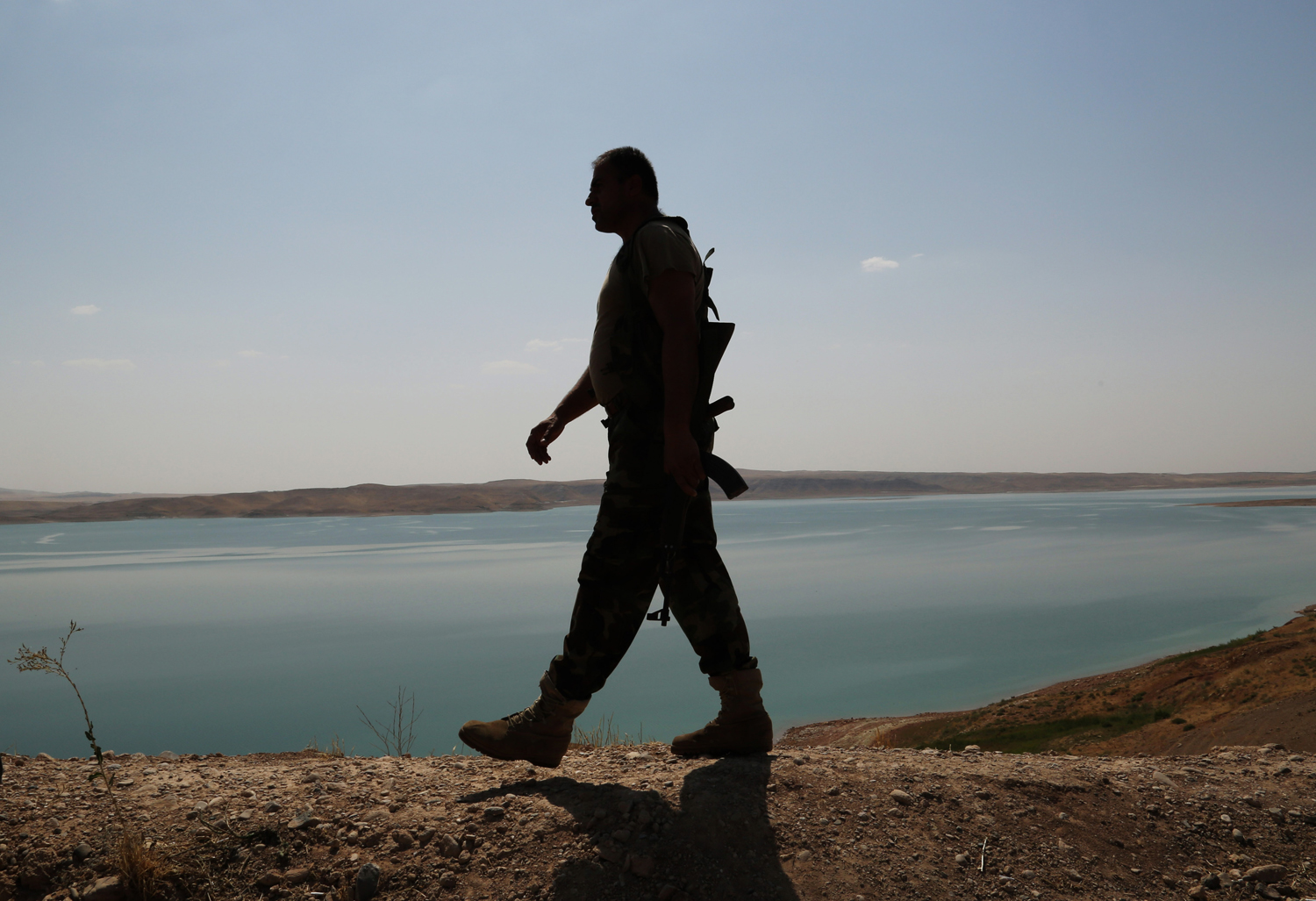
Kurdish forces pushed deeper into territory held by the Islamic State of Iraq and Greater Syria (ISIS) throughout Sunday and regained partial control over the strategically vital Mosul Dam as U.S. warplanes launched fresh sorties against the Sunni insurgents from the skies.
The U.S. Central Command confirmed that American aircraft launched at least 14 strikes against ISIS-manned armor, checkpoints and heavy weaponry positioned near the dam on the Tigris River in northern Iraq.
“These strikes were conducted under authority to support Iraqi security forces and Kurdish defense forces as they work together to combat [ISIS],” read a statement released by U.S. military officials. The aerial onslaught follows at least nine separate air strikes launched against ISIS positions earlier on Saturday.
It is seen as vital that the dam not be in ISIS hands, because the Sunni insurgents could either use it to choke off water supplies to the capital, Baghdad, and areas south of it, or they could destroy it and unleash catastrophic floods.
President Barack Obama authorized the use of American airpower against ISIS fighters on Aug. 8 following the group’s offensive blitz into Kurdish territory earlier this month. The strikes are the first such military incursion into Iraq since U.S. forces withdrew from the country in 2011 and were successful in alleviating the siege of Mount Sinjar.
However, analysts argue that U.S. involvement in Iraq may not be as limited as the Obama Administration hopes.
“For a President who wanted to leave [Iraq] and had the strong backing of his people, [Obama]’s now very much in Iraq, and I think the U.S. commitment and direct engagement in Iraq is going to be long term,” Salman Shaikh, director of the Brookings Doha Center, tells TIME. “It’s not going to be easy to dislodge [ISIS], both militarily or even in the hearts and minds of Sunni Iraqis.”
Meanwhile, across the border in Syria, forces loyal to embattled President Bashar Assad launched their own strikes against ISIS’s stronghold in Raqqa.
The onslaught by the Syrian air force reportedly killed 31 militants along with eight civilians, according to the U.K.-based Syrian Observatory for Human Rights.
“The regime wants to show the Americans that it is also capable of striking [ISIS],” Rami Abdel Rahman, the group’s director, told AFP.
ISIS forces currently control vast swaths of territory along the Tigris and Euphrates rivers spanning northeastern Syria across the border into western and northern Iraq. The group is currently fighting on multiple fronts against Kurdish militias, the Iraqi army, forces loyal to the Assad regime and opposition rebels in Syria in a bid to consolidate its self-declared Islamic caliphate.
More Must-Reads from TIME
- Donald Trump Is TIME's 2024 Person of the Year
- Why We Chose Trump as Person of the Year
- Is Intermittent Fasting Good or Bad for You?
- The 100 Must-Read Books of 2024
- The 20 Best Christmas TV Episodes
- Column: If Optimism Feels Ridiculous Now, Try Hope
- The Future of Climate Action Is Trade Policy
- Merle Bombardieri Is Helping People Make the Baby Decision
Contact us at letters@time.com